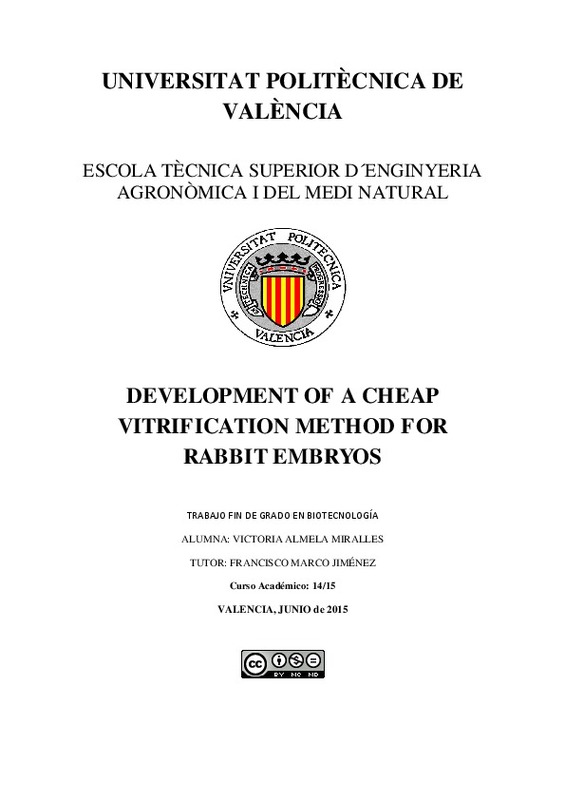JavaScript is disabled for your browser. Some features of this site may not work without it.
Buscar en RiuNet
Listar
Mi cuenta
Estadísticas
Ayuda RiuNet
Admin. UPV
Desarrollo de un sistema económico para la vitrificación de embriones de conejo
Mostrar el registro completo del ítem
Almela Miralles, V. (2015). Desarrollo de un sistema económico para la vitrificación de embriones de conejo. http://hdl.handle.net/10251/54315.
Por favor, use este identificador para citar o enlazar este ítem: http://hdl.handle.net/10251/54315
Ficheros en el ítem
Metadatos del ítem
| Título: | Desarrollo de un sistema económico para la vitrificación de embriones de conejo | |||
| Autor: | Almela Miralles, Victoria | |||
| Director(es): | ||||
| Entidad UPV: |
|
|||
| Fecha acto/lectura: |
|
|||
| Resumen: |
[ES] Uno de los soportes más utilizados actualmente en la vitrificación de óvulos y embriones es el denominado Cryotop. Este soporte permite altos ratios de enfriamiento debido al pequeño volumen de la solución de vitrificación ...[+]
[EN] Over the last several decades there have been many studies in order to develop efficient
carriers that produce minimum damage over the cells. Cryotop is one of the more
currently employed carriers for oocyte and ...[+]
|
|||
| Palabras clave: |
|
|||
| Derechos de uso: | Reconocimiento - No comercial - Sin obra derivada (by-nc-nd) | |||
| Editorial: |
|
|||
| Titulación: |
|
|||
| Tipo: |
|
recommendations
Este ítem aparece en la(s) siguiente(s) colección(ones)
-
ETSIAMN - Trabajos académicos [3547]
Escuela Técnica Superior de Ingeniería Agronómica y del Medio Natural







